Unique dolphin strategy delivers dangerous octopus for dinner
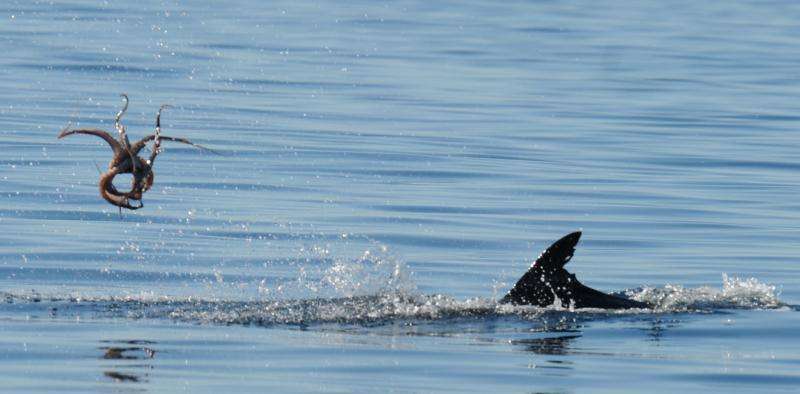
For wild predators, catching, killing and eating prey can sometimes be a risky business. We can see this on the African savannah, where a well-aimed kick from a zebra can spell trouble for a hungry lion.
But the same can also be true in the ocean, where some prey types are far from helpless seafood.
In particular, a large octopus can be a risky prey for predators to tackle. This is especially so for marine mammals, such as dolphins, which don't have hands to help them keep control of this clingy, eight-armed prey.
Our new research highlights the development of complex behaviours that allow dolphins to eat octopus, thereby improving their ability to survive and reproduce.
It's another example of a strategy that helps to drive the success of dolphins in coastal environments around Australia.
Dangers of eating octopus
In 2015 an adult male bottlenose dolphin was found dead on a beach in Bunbury, southwest Australia.
Wild dolphins face many threats in today's oceans, yet it was a gruesome surprise when we found octopus arms hanging out of the stranded dolphin's mouth.
An examination by a veterinary pathologist revealed that this otherwise healthy dolphin, known as "Gilligan" to the research team, had suffocated to death while trying to eat an octopus.
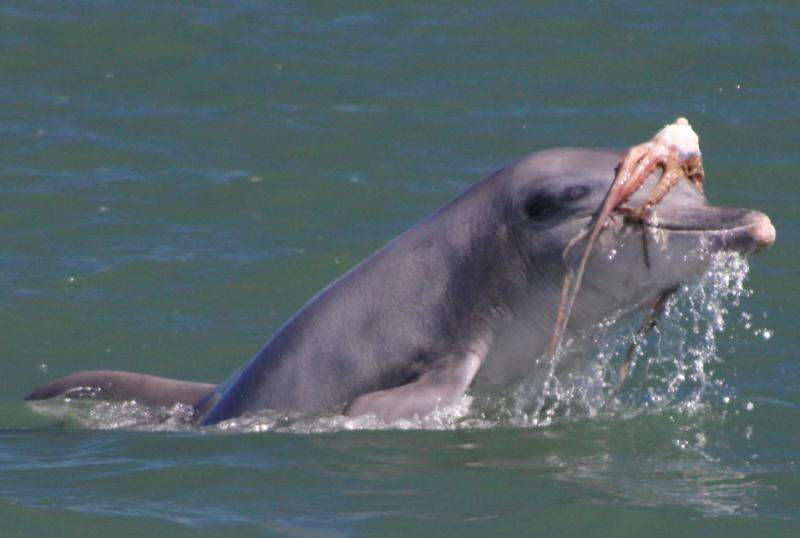
As strange as it sounds, this is not the first recorded case of a dolphin choking to death on an octopus in southwest Australia. There have also been several observations from around the world of dolphins facing difficulties while tackling octopus.
So what is it that makes octopus so hard to handle?
Octopus can grow quite large, with some species bearing muscular arms reaching more than a metre long. Each of their eight arms have powerful suction cup-like suckers on the underside, which are normally used to help octopus capture their own prey while crawling along the seafloor.
But when attacked by a dolphin, these suckered arms also help octopuses to defend themselves by latching onto the dolphin's smooth skin.
When this happens, dolphins have been observed leaping rapidly out of the water before crashing onto the surface in an attempt to dislodge an octopus.
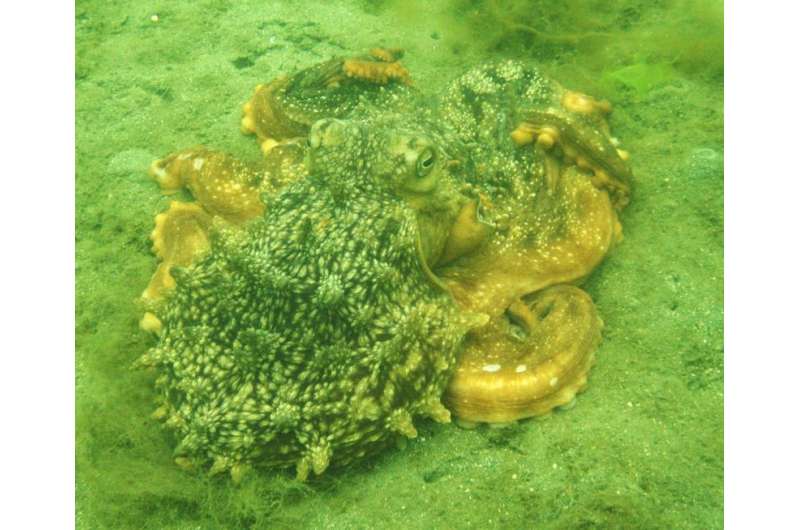
The real problem is that these arms stay active even after an octopus has been mortally wounded. So even while a dead octopus is being processed, the suckers may still be able to find something to stick onto.
Australia's octopus-eating dolphins
But we've observed some wild bottlenose dolphins that have found a way to handle and feed on octopus, with the findings published today in Marine Mammal Science.
These observations were made between March 2007 and August 2013, while we were conducting boat surveys to study the dolphins living off Bunbury's coast.
Over this time, we observed 45 octopus handling events by dolphins. Most were performed by adults (male and female), although we also saw four juveniles and two calves performing this behaviour.
During these events, dolphins were observed shaking and tossing octopus around at the water's surface. In some instances, the prey was gripped in the teeth before being slapped down onto the water.
This likely helped both to kill the octopus and to tear it into smaller, more digestible pieces. In other instances, the octopus was tossed across the surface of the water before being recaptured and tossed again.
By tossing the octopus across the water, dolphins avoid letting the octopus latch onto their bodies. This behaviour also likely assists in wearing out the octopus's reflex responses that make the suckered arms so dangerous to swallow.
Once the prey has been battered and tenderised enough that the arms are unresponsive, it is then safe for the dolphins to proceed with swallowing their catch.
It's quite a process the dolphins have developed to deal with the octopus. They have a short, fused neck which means they have to arch their whole body to toss their prey out of the water.
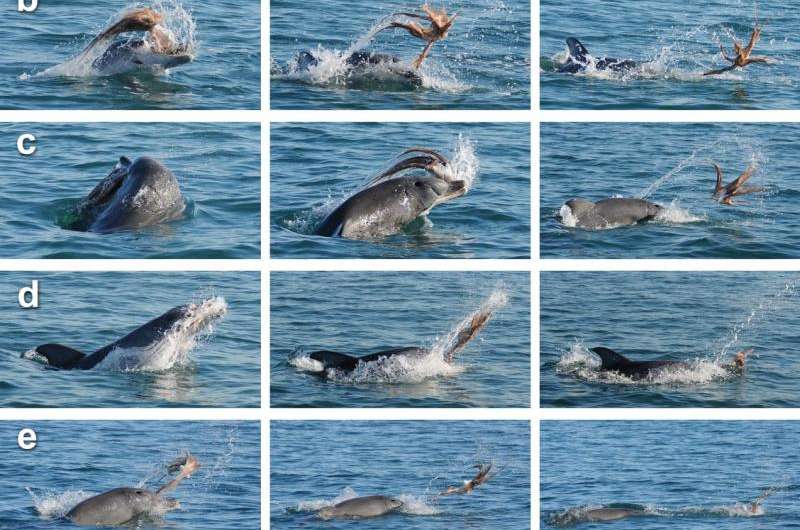
Given the danger, why eat octopus at all?
When we looked closely at when these observations were made, we found that the dolphins were targeting octopus more frequently over winter and spring. These cooler times of year are also the octopus's breeding time.
Octopus are semelparous, which means they slowly become weaker and then die in the weeks after they finish breeding. It is possible that as they become weaker, they also become easier to catch, making them a relatively easy meal for any opportunistic dolphins swimming by.
At the end of the day, octopus are just part of the broad diet eaten by wild bottlenose dolphins.
Dolphins have also been found to use several other highly specialised feeding behaviours, including processing cuttlefish by popping out the cuttlebone, stranding themselves while hunting fish, and using a marine sponge as a tool to probe the seafloor while searching for buried fish hiding in the sediment.
Octopus shaking and tossing is yet another example that illustrates how intelligent and adaptable these charismatic marine predators are.
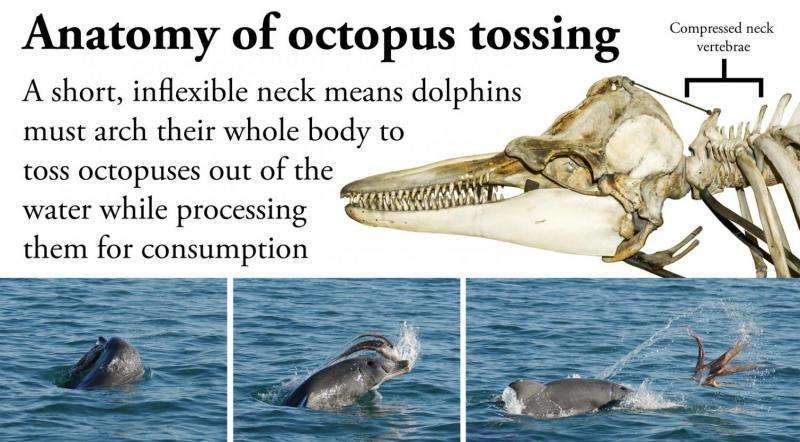
Provided by The Conversation
This article was originally published on The Conversation. Read the original article.![]()




















